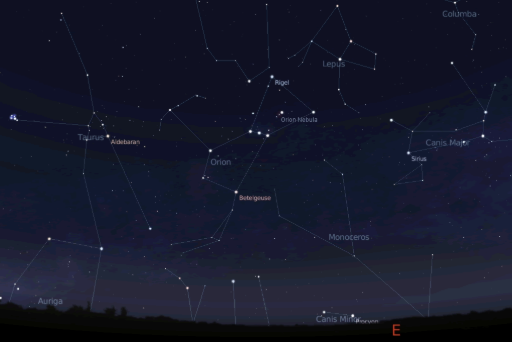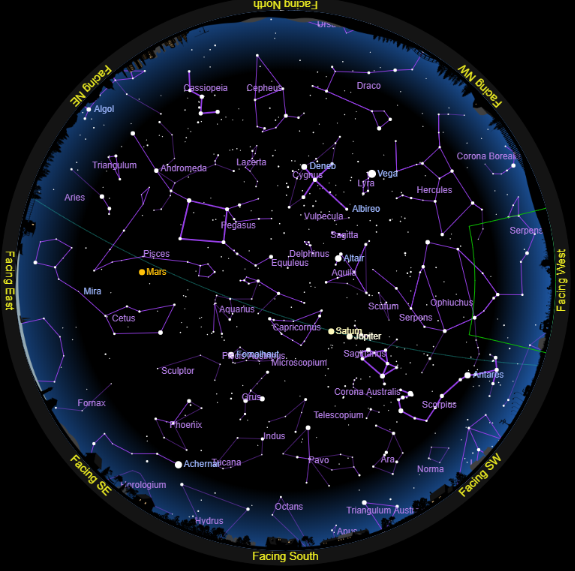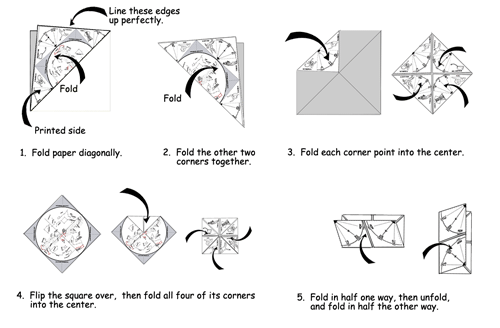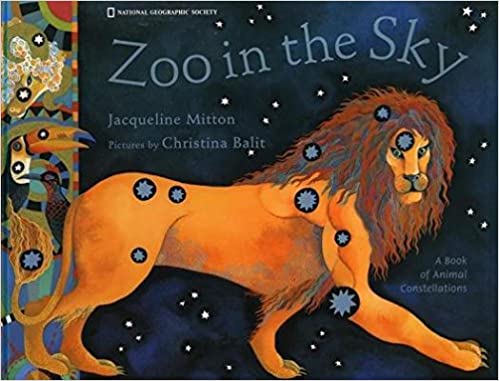Our ancestors knew the night sky like the back of their hands.They observed the sky until they found patterns in the stars and utilized them as tools for navigation. They made up stories about mythological creatures and characters which they associated with the star patterns. Astronomers began to make maps of the stars and called them constellations.
There are 88 officially recognized constellations in the sky. At different times of the year, different constellations can be seen. Different constellations can also be seen depending on where you are on Earth. Scroll down to learn more about constellations and the night sky!

TOUR THE LONGWAY PLANETARIUM
We interviewed Jeffrey Stark, Manager of Longway Planetarium in Flint, Michigan.
Read how he became an astronomer and what he does at the Planetarium!

How did you become interested in becoming an astronomer?
As is so often the case I had a fantastic teacher. My decision to go into science didn’t happen until my junior year of high school when I was taking the first of my two AP physics courses. The teacher was deeply passionate and curious about the physical world and those type of people have a sort of contagious quality about them. My undergraduate university had a planetarium that I was lucky enough to work at as a student there so physics gradually morphed into astronomy.
How much schooling does it take to become an astronomer?
The answer to this has a very wide range. For instance, I’m still in school, working on my Ph.D. As with most careers it really depends on what you want to do. A bachelor’s degree in a related field (physics, astronomy, engineering, etc.) is often enough to get a technician position helping with lab equipment or in a museum or science center. A master’s degree and often beyond is required for any work at a college or university setting even just assisting in planetarium work. Any position that allows you to take on your own research will require a Ph.D. and it’s becoming more common to require a post-doc as well (yikes).
A couple of pieces of advice to anyone interested in schooling for this. The first is to take it one step at a time. Do well in high school, find opportunities in college to learn about sciences, make relationships with professors and other successful students and one day you wake up and part of your life is writing your own research projects. I don’t mean to suggest it’s easy, I had a full-time job while I completed my master’s and continue to do both through my Ph.D. It’s a lot of work but it’s work that benefits you over time.
My second piece of advice is for people who are fascinated by astronomy but might not want a career in science. A lot of people don’t realize that astronomy needs a diverse workforce. NASA needs graphic designers, PR agents, accountants, you name it. If you want to benefit the astronomical or scientific community but don’t want to be in school into your thirties (there are days I have those feelings) you can still use a variety of other skills to do so.
What do you enjoy most about being an astronomer?
What I have come to appreciate most about life in general are opportunities where you can surround yourself with like-minded individuals. It’s a rare gift and if you find yourself at a place in life where you have that I think you should reflect on your good fortune. My favorite part of being an astronomer is getting to talk and listen to other astronomers. I suspect this is similar for many professional career choices.
Of all the things you see in the sky, what is your favorite?
These are always fun questions because it can be paraphrased as asking, “there are literally dozens of thousands of fascinating things that backyard telescopes can find, pick just one of them as the best one.” and understandably it’s basically impossible 🙂. Normally when asked I talk about the Andromeda Galaxy which I believe I covered in the video. It’s the first Deep Sky Object I found in a telescope and I love that you don’t need a telescope to see another galaxy. Another fun object I didn’t cover in the video that’s rising soon is Betelgeuse, the bright red star that is the shoulder of Orion. That one is neat because it’s a hypergiant star about 800 times the diameter of our sun. Sometime in the next few thousand years we expect Betelgeuse to go supernova and we really have no idea when. Could be tomorrow. Probably not.
What do you do as manager of Longway Planetarium?
Oh, a little bit of everything. I order new planetarium shows, manage the part time staff, train presenters, develop and teach lessons at the charter school on our campus, scripting and programming for planetarium related computer needs, interact with local astronomy clubs, give talks at local organizations, host star parties, travel to schools with our inflatable planetarium, attend conferences to present papers and workshops, host teacher PDs, interact with the public about potential meteorite finds, and whatever else comes up. It’s not exactly a 9-5.
What advice do you have for someone who wants to become an astronomer?
Plan early. It’s much easier to have a plan and try to stick to it than to allow certain milestones to pass you by without realizing it and then having to back up and start over. Probably the most important piece of advice I can give is don’t be afraid to reach out to people who have trudged the path before you, especially if your family lacks experience in the area. I was lucky to be born into a loving family but neither of my parents went to college so while they did what they could to help me, they really didn’t know any more about the processes involved with undergraduate college than I did, let alone what needed to happen if I was planning for graduate school. If you find yourself in that situation it’s difficult to know where to start and simply asking for advice from people who have already been through it can help you understand what you need to do to be successful in achieving this type of a goal.
ASTRONOMY VS. ASTROLOGY
Astronomy is the scientific study of everything in outer space. Astronomers like Jeffrey Stark know that stars many light years away have no effect on the ordinary activities of humans on Earth.
Astrology is something else. It’s not science. No one has shown that astrology can be used to predict the future or describe what people are like based only on their birth date. Still, like reading fantasy stories, many people enjoy reading their “astrological forecast” or “horoscope” in the newspaper every day. Scroll down to learn more about how early people tried to make sense of what they saw in the night sky before they had modern telescopes and knew more about what stars and planets are made of and how they move through the universe.
EXPLORE THE NIGHT SKY
Use these two great websites to help you learn more about what you see in the night sky right now.
SKY AND TELESCOPE
Learn what constellations are visible based on your location right now, then go outside and look up!

Stargazing is easiest away from city lights, but even in town on a clear night you can find constellations with bright distinctive bright, first magnitude stars.
Did you know there are designated International Dark Sky Parks and Reserves? There are two Dark Sky Parks in Michigan and a number of reserves, including one in Clayton, Michigan, about a one hour drive southwest of Ypsilanti.
TONIGHT’S SKY
Watch a new video each month to learn which constellations you’ll see in the night sky that month.
One of the easiest constellations to spot is Ursa Major, the Great Bear, also known as the big dipper. If you can locate the big dipper, you can get your bearings to search for other constellations using a sky map.
Search for another constellation you know you should be able to find according to Sky & Telescope, then do a bit of research to learn more about the story behind it.

MAKE A SKY JOURNAL
Now that you have the tools to find and identify constellations, you can keep a record of your observations! Designate a notebook as a special sky journal. You can also take a small stack of blank paper and fold it in half for your journal.
Draw what you see in the night sky every evening.
INSTRUCTIONS
- Draw a circle that’s at least 5 inches diameter.
- Draw some small landmarks you see on the horizon around the edge of the circle such as trees and buildings to help you keep track of which way you’re looking.
- Now look straight up and draw what you see using small dots of different sizes to represent the stars.
- Note the date and time on each drawing, and the weather conditions which you can find on a phone’s weather app. You can make any special notes about what the sky looked like, or even use some colored pencils or water colors to note the variations in the sky each day. You can also track the phases of the moon by paying close attention to what the moon looks like each night.


Above are examples of constellations you might draw. The top one is a drawing of the constellation Leo, the lion. The lower one is what our ancestors imagined when they named it.
CONSTELLATION STORIES
READ CONSTELLATION STORIES
If you know myths that tell stories of what people long ago saw in the constellations, you’re probably most familiar with classic Greek and Roman mythology. Orion is one example. It’s of the most visible constellations. Because of its location, it can be seen throughout the world, and it has a first magnitude star named Betelgeuse that is easy to see.
When people in ancient Greece looked up and saw Betelgeuse and the stars around it, they saw a hunter. In Greek mythology, Orion bragged that he was such a good hunter he would kill every animal on earth, so the Gods sent a scorpion to kill him. Orion tried to fight the scorpion, but his arrows could not pierce the thick armor of the scorpion. In the end, both he and the scorpion were raised to the sky to remind people not to be too prideful.
People around the world see Betelgeuse and its surrounding stars, but they saw them in different ways and made up different stories to go with what they saw. Read below to see how 17 other cultures see pictures using stars around Betelgeuse, and other first magnitude stars!
WRITE A CONSTELLATION STORY
On a dark clear night, you can look up in the sky and see stars glinting. Many years ago, people in Greece drew imaginary lines from star to star, creating pictures of familiar animals and things. They named these pictures, too: a constellation shaped like an archer is named for Orion, the hunter. They created myths about these constellations that would go on to be told and retold. These myths were passed down through oral storytelling, so there are often multiple versions of these stories.
Click the button below to see instructions for how you can create your own constellation and the myth behind it.



MAKE A STAR FINDER
Learn your way around the night sky by finding some of the constellations. You can make a star finder to help.
Print a star finder, then cut it out on the solid lines. Add color or decorate it if you like! Then fold it, following the instructions below.

Play the Star Finder Game
Thumbs and first fingers inside the four corners of Star Finder. Stick your thumbs and first two fingers into the four pockets on the bottom of the Star Finder.
Ask another person to choose one of the top four squares. Then, depending on the number on the square she chose, open and close the Star Finder that many times (open up and down, close, open side to side, close, etc.). For example, if she chose number 6, open and close the Star Finder 6 times. Steps to open and close Star Finder.
Then, ask the person to look inside the Star Finder and pick one of the four visible constellations. This time, open and close the Star Finder once for each letter to spell out his choice. For example, if he chose “Lyra,” you would open and close the Star Finder 4 times, once for each letter: L – Y – R – A.
Ask the player again to pick one of the four constellations visible. Open the panel to see the name of a constellation (highlighted in red) she will try to find in the sky for this month.
For some of the months, not every part of the Star Finder may show a highlighted constellation for you to find. In this case, just try to find the constellation that is nearest to the part of the sky you picked.


THE CONSTELLATION CALENDAR

CONSTELLATIONS AND THEIR SYMBOLS
Some curious symbols ring the outside of the Star Finder. These symbols stand for some of the constellations in the zodiac. What is the zodiac and what is special about these constellations?
Imagine a straight line drawn from Earth through the Sun and out into space way beyond our solar system where the stars are. Then, picture Earth following its orbit around the Sun. This imaginary line would rotate, pointing to different stars throughout one complete trip around the Sun—or, one year. All the stars that lie close to the imaginary flat disk swept out by this imaginary line are said to be in the zodiac.
The constellations in the zodiac are simply the constellations that this imaginary straight line points to in its year-long journey.
MORE CONSTELLATION FUN
SKYVIEW APP
Having trouble finding exactly where the constellations you’re looking for are? You don’t need to be an astronomer to find stars or constellations in the sky with the free SkyView app. Download it from the App Store or Google Play and let it guide you to the constellation’s location and identify it.
The app uses your camera to precisely spot and identify celestial objects in the sky, day or night!


READ ON HOOPLA
Read a classic kids guide to constellations called Find the Constellations, written by H.A. Rey, the author of Curious George!


